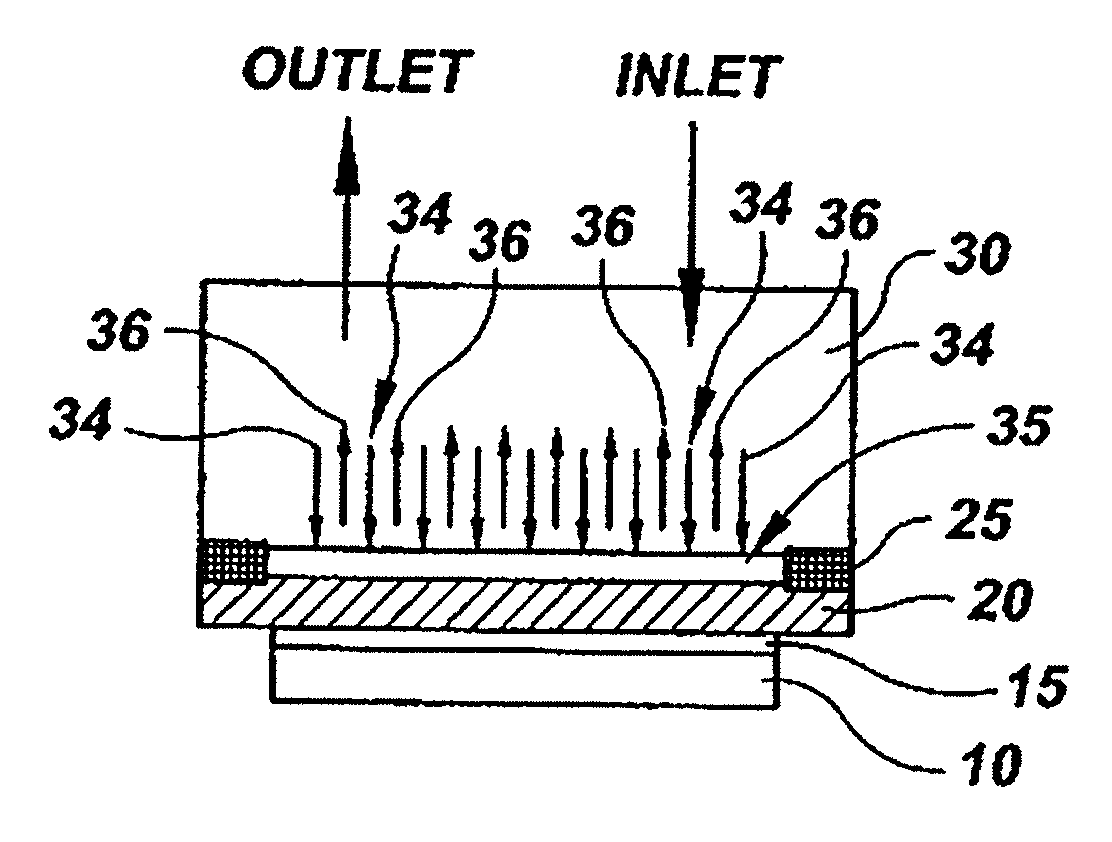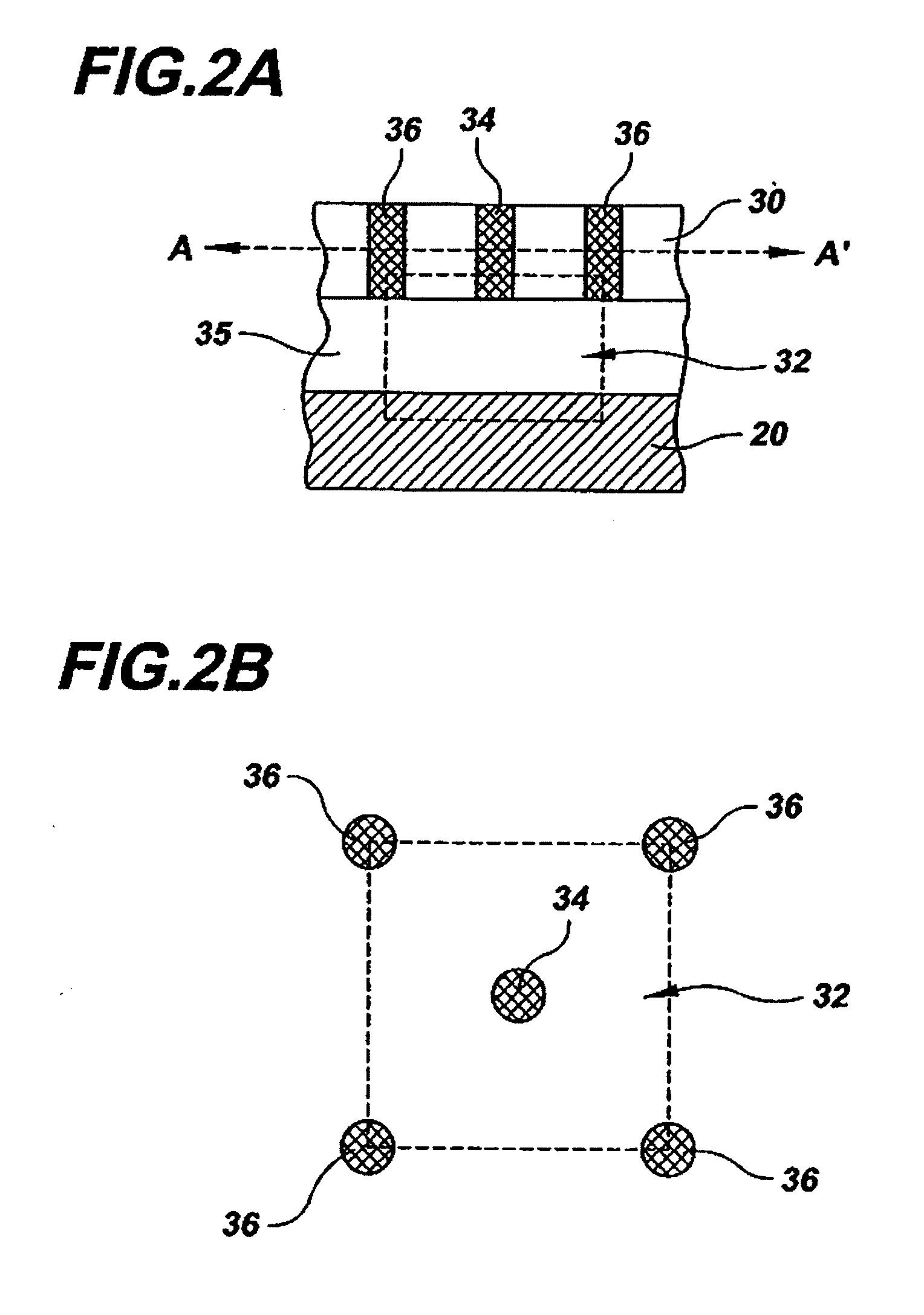High power microjet cooler
a micro-jet cooler and high-power technology, applied in the field of high-power micro-jet coolers, can solve the problems of uneven cooling of the target, high heat/cooling transfer rate decrease, and undesirably increase the power flux, so as to enhance the thermal control of the assembly, and enhance the thermal control of the cooling plate
- Summary
- Abstract
- Description
- Claims
- Application Information
AI Technical Summary
Benefits of technology
Problems solved by technology
Method used
Image
Examples
example
[0055]To test the distribution systems of the invention, a number of thermal assemblies having modified cooling plates with surface features were tested and compared against assemblies having cooling plates with planar surface areas. All tested assemblies included a 200 μm thick Si base having cooling cell dimensions of 250 μm by 250 μm with inlet / outlet diameters of about 70 μm. Water was used as the cooling fluid with a microjet velocity of 3 m / s and an inlet temperature of about 20° C. The flux at the base bottom was about 1000 W / cm2 while the gap between the cooling plate and the inlet / outlet array of the manifold was about 150 μm. The reference cooling capability (“q-ref”) is estimated using calculated convective coefficient over a 0.4 mm total silicon thickness (chip+base) with 45° C. total thermal budget and 50 μm TIM with k=3 W / mK.
[0056]The thermal performances of these assemblies is shown below whereby the cell types include a reference cell (“Ref-2”) having a planar coolin...
PUM
 Login to View More
Login to View More Abstract
Description
Claims
Application Information
 Login to View More
Login to View More - R&D
- Intellectual Property
- Life Sciences
- Materials
- Tech Scout
- Unparalleled Data Quality
- Higher Quality Content
- 60% Fewer Hallucinations
Browse by: Latest US Patents, China's latest patents, Technical Efficacy Thesaurus, Application Domain, Technology Topic, Popular Technical Reports.
© 2025 PatSnap. All rights reserved.Legal|Privacy policy|Modern Slavery Act Transparency Statement|Sitemap|About US| Contact US: help@patsnap.com



